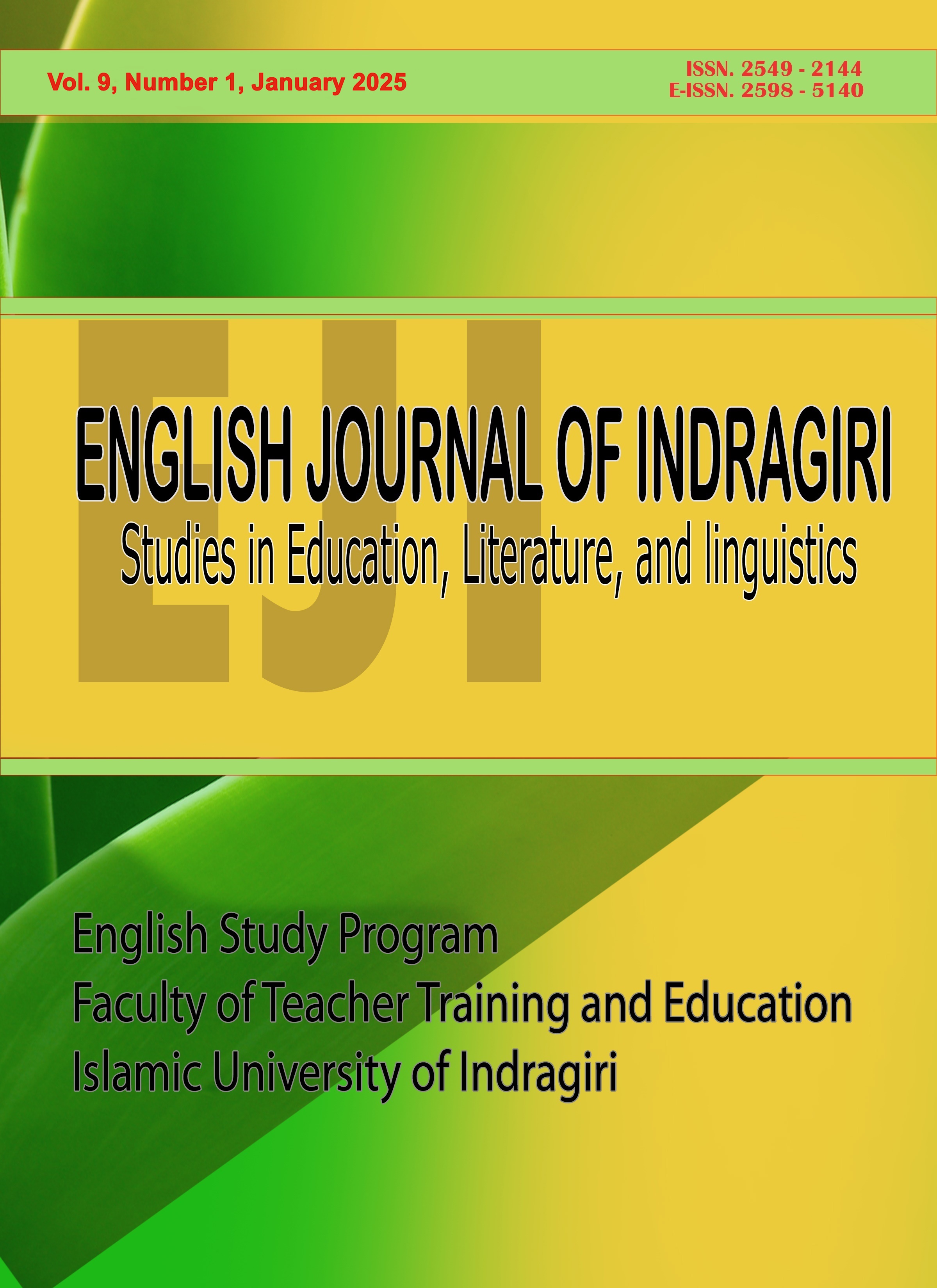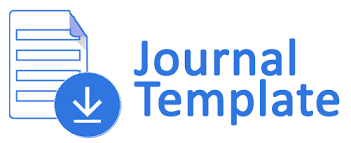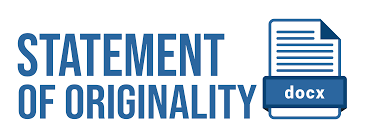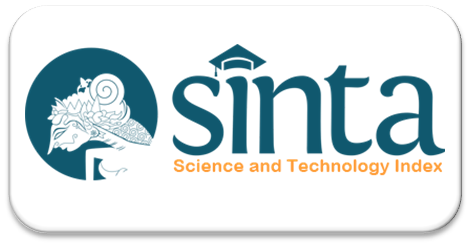Students’ Perception on Code Switching Used by English Lecturer
DOI:
https://doi.org/10.61672/eji.v9i1.2877Keywords:
Students’ Perception, Code Switching, English Lecturer, Pamulang UniversityAbstract
This research is a continuation of research that conducted previously with the title "An Analysis of Code Switching Used by English Lecturer" which focuses on types of code-switching and the purpose of code-switching used by the lecturer. Previous research showed that the functions that appeared most often were attracting students' attention, social functions and the last is organize learning and teaching activities effectively. Based on these findings, the author is interested in conducting further research from a different perspective. The researchers are interested in conducting further research from students’ perspective. The researchers would like to analyse and prove that code-switching carried out by lecturers is indeed needed by students and is effective in the teaching and learning activities. This research is a descriptive qualitative research. The data are considered as descriptive qualitative because they are form of written and spoken (words) rather than numbers. The research design used in this research is survey research design, meanwhile the researchers collected the data (sample) during English class that conducted by the researchers. The findings of this study, several practical recommendations can be proposed to enhance the effectiveness of code switching in teaching contexts in higher education. Conduct regular training sessions for lecturers to enhance their understanding of teaching strategies that integrate code switching. Lecturers need a deep understanding of how to implement code switching effectively and responsively to students' needs. Further research is also needed to delve into the long- term effects of code switching on academic achievement and students' language proficiency. Thus, this approach not only enriches students' learning experiences but also supports the inclusive and multicultural vision of modern higher education institutions.
References
Ajibola, M. (2011). Code mixing as a sociolinguistic medium in some selected songs in the Nigerian music industry. University of Ilorin.
Boyandi, A., & Kalvanagh, M. K. (2021). Teachers’ perceptions on code switching in EFL classroom discourse. Discourse and Communication for Sustainable Education, 12(2), 45-53.
Dewi, H. C. (2021). Code-switching used by Indonesian celebrities on social media. Deiksis, 13(3), 222-230.
Elo, S., & Kungas, H. (2008). The qualitative content analysis process. Journal of Advanced Nursing, 62(1), 107-115.
Gao. (1989). Content analysis: A methodology for structuring and analyzing written material. United States: United States General Accounting Office.
Gerungan, F. N., Olli, S. T., & Andries, F. (2020). An analysis of code-switching used in classroom. Journal of English Language and Literature Teaching, 5(1), 61-85.
Hudson, R. A. (2001). Sociolinguistics. Cambridge: Cambridge University Press.
Hafid, & Margana. (2022). Code-switching practices in multilingual classrooms: Exploring pedagogical functions. Al-Ishlah: Jurnal Pendidikan, 14*(2), 2552–2562.
Jiao, H. (2021). A comparative study in English classroom code-switching. British Journal of Education, 9(11), 23-31.
Juniari, N. K. D., Ariyaningsih, N. N. D., & Jendra, I. M. I. I. (2021). Code switching in Jika Kita Tak Pernah Jadi Apa-apa novel. Journal of Humanities, Social Science, Public Administration and Management, 1(2), 45-51.
MacSwan, J. (2017). "The role of code-switching in the development of bilingual language proficiency." International Journal of Bilingual Education and Bilingualism, 20(7), 738-753
McKay, S. L., & Hornberger, N. H. (1996). Sociolinguistics and language teaching. USA: Cambridge University Press.
Moleong, L. J. (2002). Metodologi penelitian kualitatif. Bandung: PT Remaja Rosdakarya.
Munawaroh, H., Hartono, R., & Sukhiya, Z. (2022). The use of code-switching in EFL classroom instruction and interaction. English Educational Journal, 12(1), 38-46.
Ningsih, S. W. (2021). Code switching in speaking classroom conversation: A focus on lecturer-student interaction at University of Muhammadiyah Malang. Advances in Social Science, Education and Humanities Research, 6(2), 294-297.
Otheguy, R., García, O., & Reid, S. (2015). "Clarifying translanguaging and its educational consequences." Bilingual Research Journal, 38(1), 1-12.
Rossman, G. B., & Rallis, S. F. (2012). Learning in the field: An introduction to qualitative research. USA: Sage Publications, Inc.
Sadiq, D. A. (2022). The function of code-switching in EFL classroom at Tishk International University. International Journal of Social Science & Educational Studies, 9(2), 219-229.
Sugiyono. (2016). Metode penelitian pendidikan (Pendekatan kuantitatif, kualitatif, dan R&D). Bandung: Alfabeta.
Trudgill, P. (2004). Sociolinguistics: An overview. In U. Ammon, N. Ditmar, K. J. Mattheir, & P. Trudgill (Eds.), Soziolinguistik: An International Handbook of the Science of Language (2nd ed., pp. xxx-xxx). Berlin: Walter de Gruyter. [Note: Page numbers must be provided when citing book chapters]
Ulfah, N. M., Tsuraya, A. S., & Risal. (2021). The use of code-switching by English teachers in foreign language classroom. Elstic-IJ, 1(1), 11-23.
Wardaugh, R. (2006). An introduction to sociolinguistics. (5th ed.). USA: Blackwell Publishing.
Downloads
Published
Issue
Section
License
Copyright (c) 2025 Fitriyah

This work is licensed under a Creative Commons Attribution 4.0 International License.




















